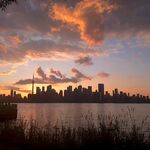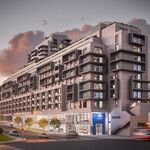DENTROBATE54
Banned
So you're saying lets basically disrupt traffic flow for a few months. Oops, we should've built a subway here instead. More disruptions and money lost.
I think parts of three of the TC routes should be subways now: Don Mills, Eglinton and yes Sheppard East too. The underground sections should be designed to facilitate subway cars, not necessarily the current model (unless the surface route stations have high-floor platforms to accomodate ease of entry/exit).
I've been misinterpreted as I don't think Eglinton necessarily has to stretch from Highland Creek to Pearson to be effective, but the section from Jane to Bellamy seems like a logical length that would be intercepted by dozens of feeder routes. As to alleviate the BD line I wouldn't create a separate line for Don Mills but rather S-wye Eglinton between Leslie and Wynford Heights. I've always been pro-Sheppard to VP in the short term but since I was against taking the Morningside LRT up into Malvern I thought it still makes sense to create a parallel LRT for that region. Hope that clears up some things.
Sheppard and Danforth to STC will cost $3 billion, while TransitCity will cost about triple that...it's better to spend money where it's needed, not to overspend in the wrong places just to get more wonderful streetcars and add world class colourful lines to our transit maps.
As long as other areas of Toronto/GTA don't lose funding for their transit priorities I'm okay with that. We do need another subway line or two though and TC admittedly did woo me into believing the whole city benefited not just one corridor.
So you do know who socialwoe is? I'm not trying to discredit your point of view, just pointing out a similarity.
I scrolled backwards in this thread and heard of him mentioned on other threads. He doesn't seem to be well liked. I fail to see though how his' wanting subways to Fallingbrook, the Zoo, Albion, Rouge Hill and Long Branch has anything remotely to do with my interest in getting subways to viable, density-centric transit corridors like Don Mills and Eglinton first and a rapid LRT commute for the peripheral suburban travellers?
First of all, Spadina stops at virtually every block. Compare it to the already-frequent stops on the University line. If a streetcar stopped as frequently as Spadina in the suburbs, it would take hours to get anywhere, and it would likely be slower than the bus.
Except the mid-blocks wouldn't occur as frequently as 200m in the suburbs. Take Eglinton for example:
In tunnel, subwaylike spacing- Brentcliffe, Laird, Bayview, Mount Pleasant, Yonge, Avenue, Spadina, Bathurst, Eglinton West, Oakwood, Dufferin, Caledonia, Yore/Keele/Trethewey.
Outside tunnel, two stops to bipartite- Municipal, Black Creek, Weston, Jane, Emmett, Scarlett, 4000 Eglinton Ave West, Royal York, Eden Valley, Islington, Wincott, Kipling, Lord Manor, Martin Grove, East Mall, Renforth.
So in its own right-of-way, Eglinton from the Leaside area to the Airport Corporate Centre could be as quick as 30-40 minutes, 20 minutes underground, 20 minutes surface (modest estimate).
Yes, but why on earth should we spend hundreds of millions to build LRT, only to rip it out again a few years later?
Ideally you're totally right. TC lines like Finch West, Jane, Lakeshore West and sections of the remaining four should be BRT first to prove or disprove the need for higher order transit. But politically this is how better commuter service is being passed down, you have to take the bad with the good I guess.
Subways are built nowadays with very large distances between them. 300-400m is not subway stop-spacing.
I would hope if a DRL is ever built they'll adhere to the old-fashioned spacing approach for the core/CBD area and other places where one stop to serve 50,000 plus patrons is unexceptable.




